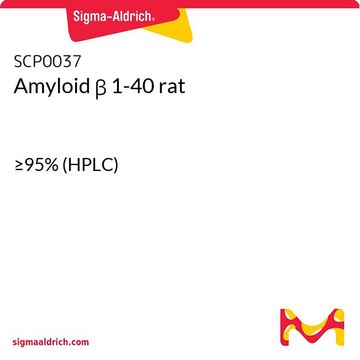A4559
Amyloid β-Protein Fragment 25-35
≥97% (HPLC)
About This Item
Productos recomendados
Nivel de calidad
Ensayo
≥97% (HPLC)
Formulario
powder
composición
Protein Content, ≥80%
Nº de acceso UniProt
temp. de almacenamiento
−20°C
cadena SMILES
CCC(C)C(NC(=O)C(NC(=O)C(C)NC(=O)CNC(=O)C(CCCCN)NC(=O)C(CC(N)=O)NC(=O)C(CO)NC(=O)CN)C(C)CC)C(=O)NCC(=O)NC(CC(C)C)C(=O)NC(CCSC)C(O)=O
InChI
1S/C45H81N13O14S/c1-9-24(5)36(43(69)50-21-35(63)52-29(17-23(3)4)40(66)55-28(45(71)72)14-16-73-8)58-44(70)37(25(6)10-2)57-38(64)26(7)51-34(62)20-49-39(65)27(13-11-12-15-46)54-41(67)30(18-32(48)60)56-42(68)31(22-59)53-33(61)19-47/h23-31,36-37,59H,9-22,46-47H2,1-8H3,(H2,48,60)(H,49,65)(H,50,69)(H,51,62)(H,52,63)(H,53,61)(H,54,67)(H,55,66)(H,56,68)(H,57,64)(H,58,70)(H,71,72)
Clave InChI
WIHBNMPFWRHGDF-UHFFFAOYSA-N
Información sobre el gen
human ... APP(351)
¿Está buscando productos similares? Visita Guía de comparación de productos
Amino Acid Sequence
Descripción general
Aplicación
- to induce neurotoxicity in cortical cultures
- to induce Alzheimer′s disease in rat model
- to induce apoptosis in mesenchymal stem cells (MSCs)
Acciones bioquímicas o fisiológicas
Otras notas
Código de clase de almacenamiento
11 - Combustible Solids
Clase de riesgo para el agua (WGK)
WGK 3
Punto de inflamabilidad (°F)
Not applicable
Punto de inflamabilidad (°C)
Not applicable
Equipo de protección personal
Eyeshields, Gloves, type N95 (US)
Elija entre una de las versiones más recientes:
¿Ya tiene este producto?
Encuentre la documentación para los productos que ha comprado recientemente en la Biblioteca de documentos.
Los clientes también vieron
Artículos
Alzheimer's disease (AD) is the most common cause of dementia in the elderly and is characterized by gradual loss of cognitive functions.
Nuestro equipo de científicos tiene experiencia en todas las áreas de investigación: Ciencias de la vida, Ciencia de los materiales, Síntesis química, Cromatografía, Analítica y muchas otras.
Póngase en contacto con el Servicio técnico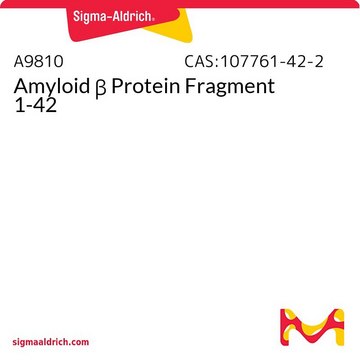

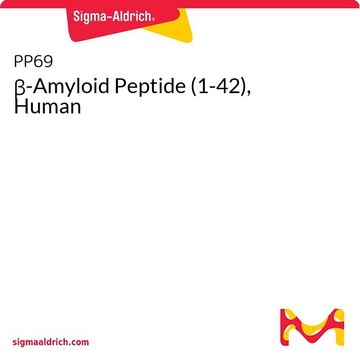

![[Ala28]-Amyloid β 25-35 ≥95% (HPLC)](/deepweb/assets/sigmaaldrich/product/images/306/938/dd9f7c72-cfca-4ea3-8e10-a7a2a7994639/640/dd9f7c72-cfca-4ea3-8e10-a7a2a7994639.jpg)

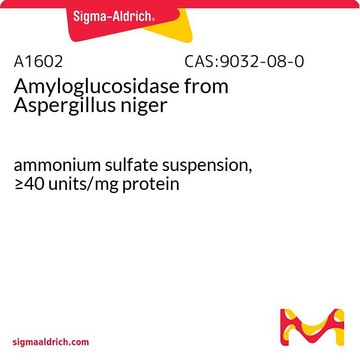
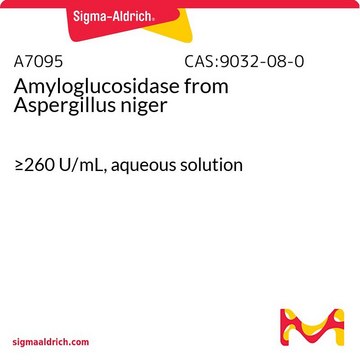

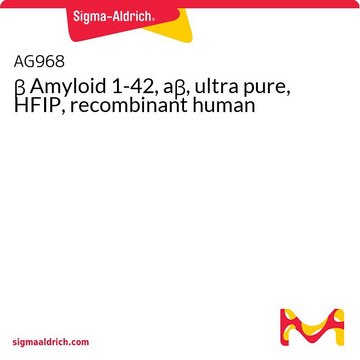

![[Arg13] Amyloid-β-Protein Fragment 1-40 ≥80% (HPLC), lyophilized powder](/deepweb/assets/sigmaaldrich/product/images/132/249/f6ab5ff8-bec9-4c18-b8b8-7b6bc8f9d58e/640/f6ab5ff8-bec9-4c18-b8b8-7b6bc8f9d58e.jpg)
